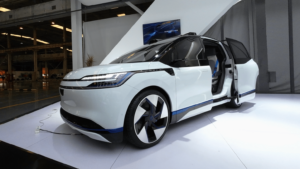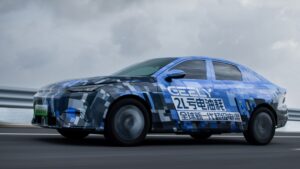The spiritual successor to the Renault Scenic mini-MPV isn’t French and isn’t all that mini, but it is bloody marvellous.
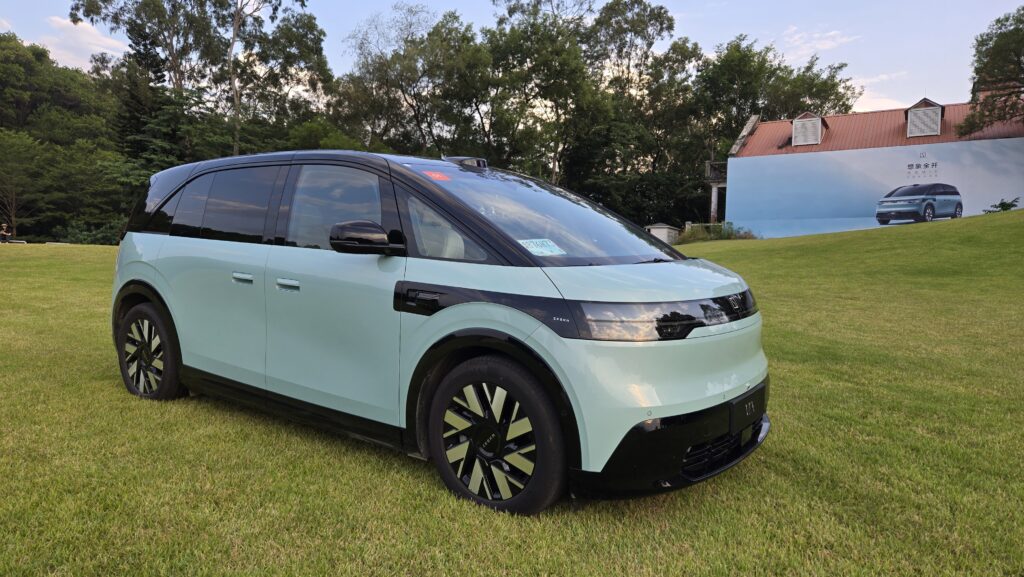
Anybody born after the year 2000 will find this hard to believe but there was once a time when not every single car on the road was an SUV. In fact, there weren’t all that many cars masquerading as off-roaders at all.
The ones that did look like they could handle a muddy puddle could generally do a half decent job of climbing tall kerb stones and they rarely sat outside schools idling aggressively.
Back then, the car of choice for carrying people and cargo was an MPV like an Espace or a Galaxy, and in 1997, Renault, the makers of the former, created what would become known as the mini-MPV by making a supremely flexible and taller version of the otherwise mundane Megane, called the Megane Scenic.
My family was among the first adventurers in this new segment, and the five of us made full use of the Scenic’s incredibly well-thought-out cabin. This was a five-seater in which each of the three rear seats could be slid forwards and backwards, could be folded down, flipped up, and even removed altogether. You could even remove one and move the outer seats inwards to make a luxurious four-seater.
Underneath the seats was individual storage for flatter items like spades and tennis racquets, behind them were two large pockets for 2-litre bottles of drink, and under your feet were two more pockets for bits and pieces. The front seats even had drawers underneath on higher level models, and came with tray tables on the back.
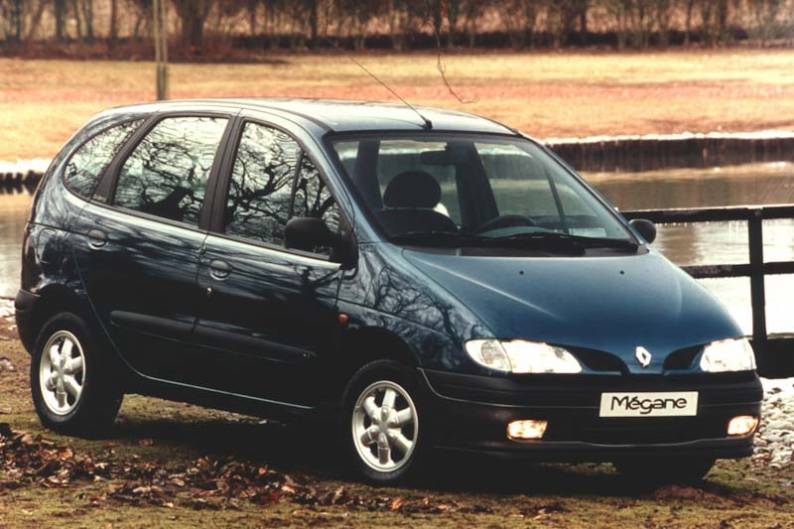
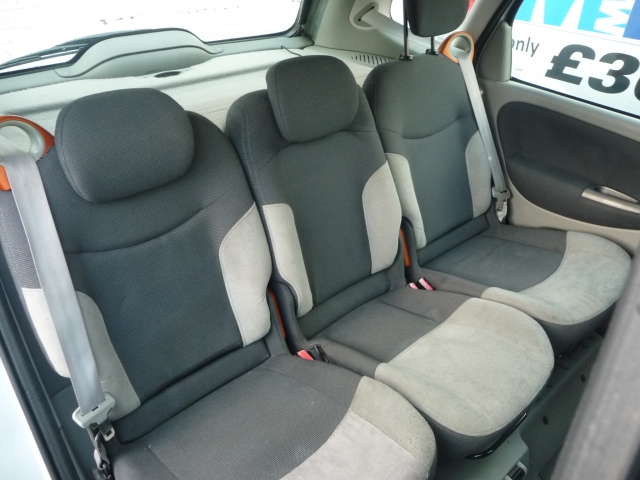
It was a car so brilliantly conceived that it inspired my early love of car design and made me dream of ways to build upon its genius.
Ours swallowed everything from a family of five, half a Toys-R-Us store, and all our clothes for a two-week road trip to Austria, to a TKM go-kart and a whole bunch of tools, without breaking a sweat. It even had twin sunroofs.
So why are you telling me this, you ask?
Because I, like many, have lamented the loss of these ultra-practical people movers in favour of wasteful SUVs for too long, and as much as Renault has tried to keep the Scenic name alive, frankly they’ve butchered its memory with the electric Scenic SUV.
But fear not, because the Scenic finally has a spiritual successor. It’s not a Renault sadly, it’s not even French, and in all honesty it’s not even that ‘mini’ anymore, but it’s a massive step in the right direction, and it’s marvellous.
It is, of course, the Zeekr MIX.
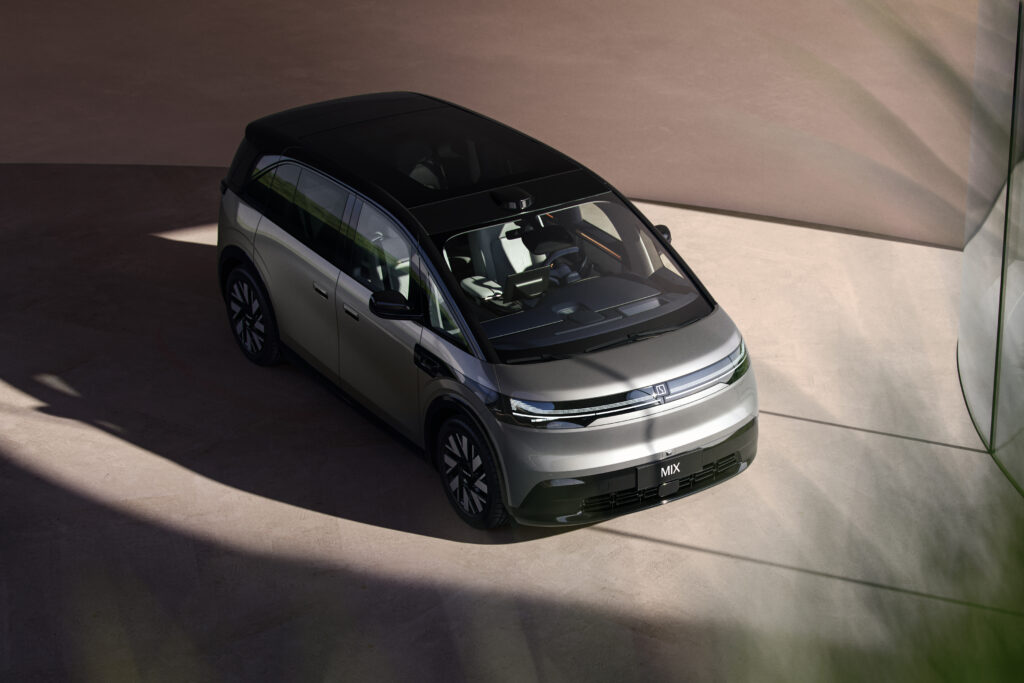
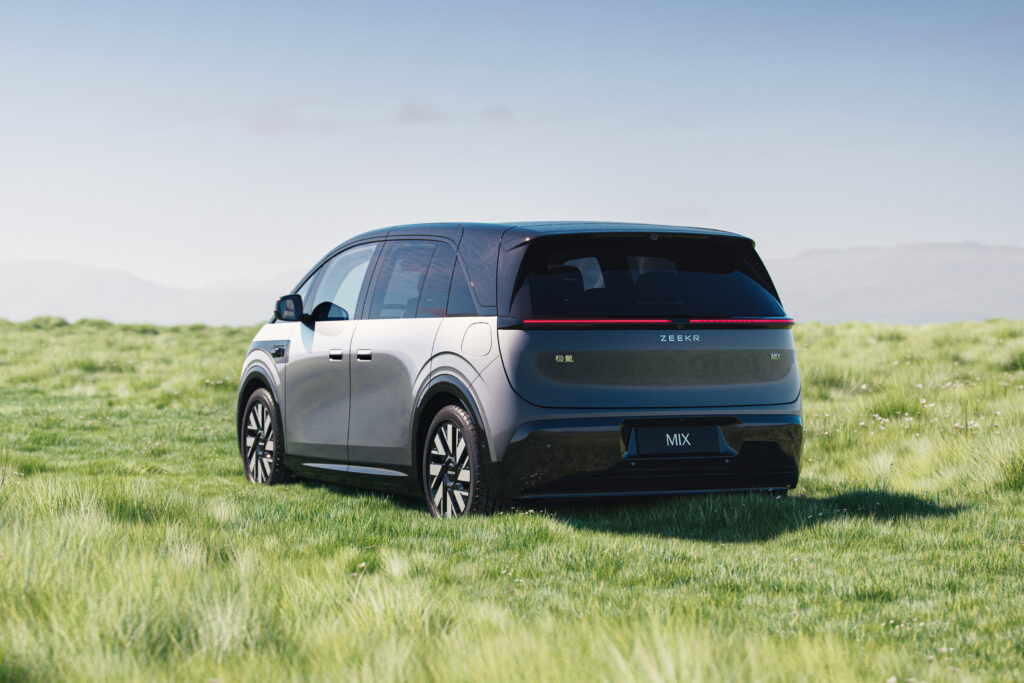
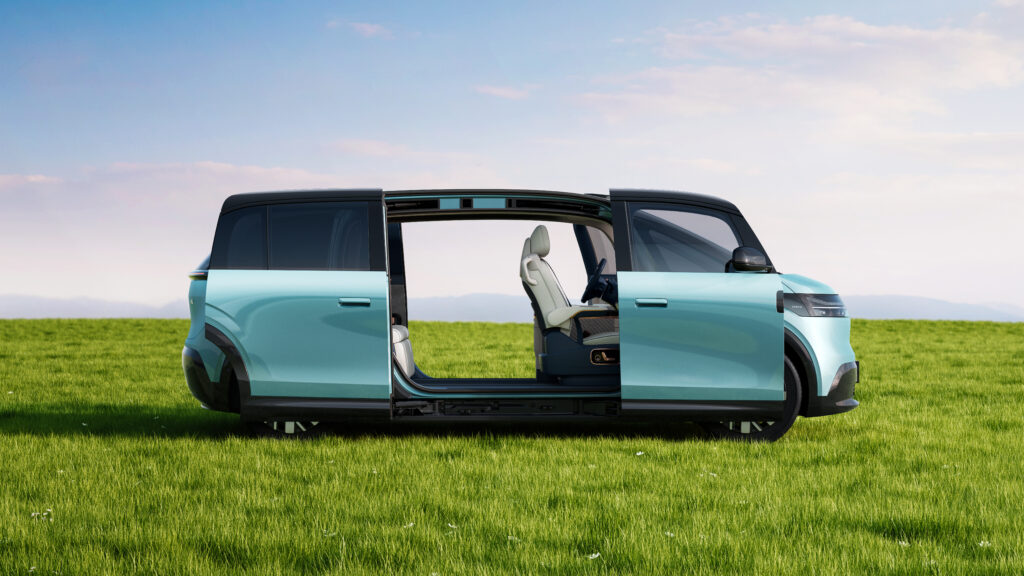
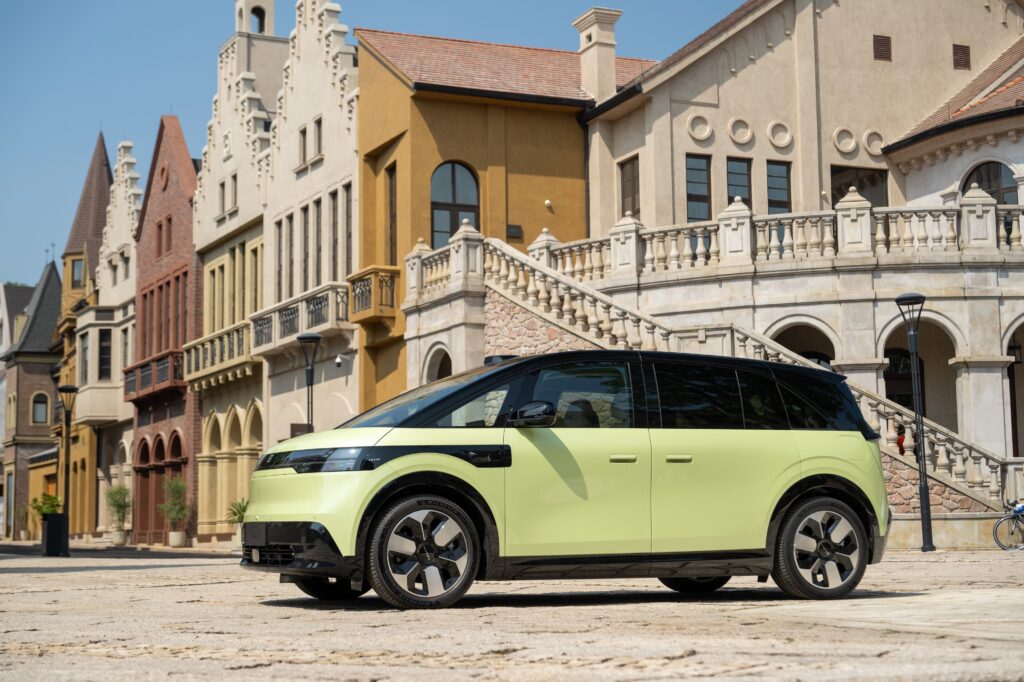
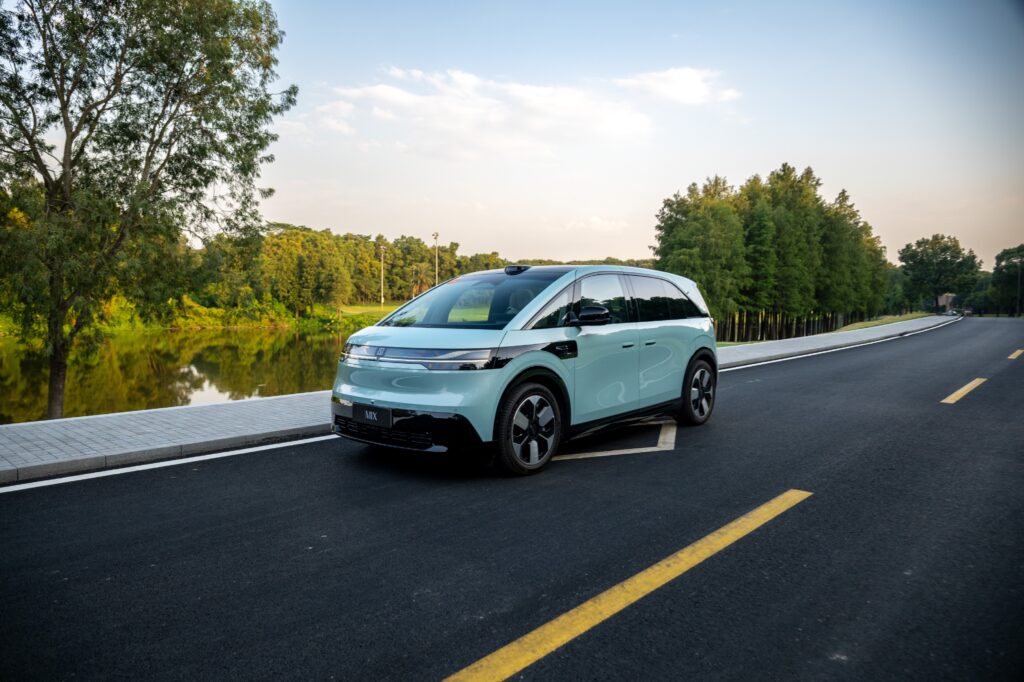
Why has Zeekr brought the mini-MPV back?
The story of the MIX’s existence actually stems from one of the emerging trends of our times, the robotaxi.
Back in 2021, Zeekr showed off the M-Vision concept, a wedgy, monobox van with sliding doors that hinged outward from the centre. It was destined to be part of Google’s Waymo autonomous taxi programme in the US, a steering wheel-free vehicle for transporting the public in space and style with zero emissions.
It was based on the recently-developed SEA platform from Geely and customised to maximise interior space and manoeuvrability.
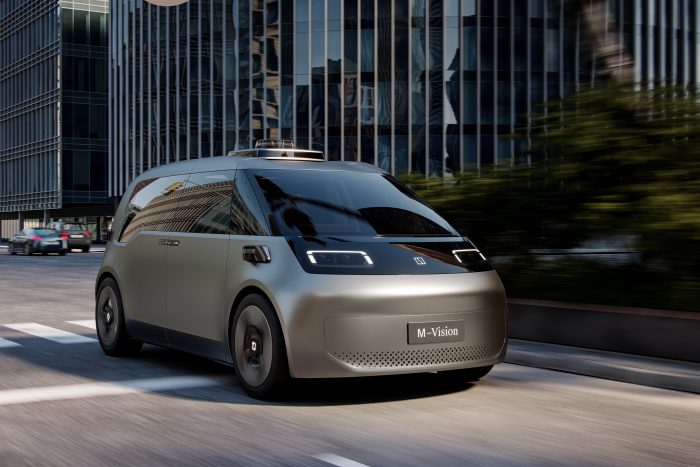
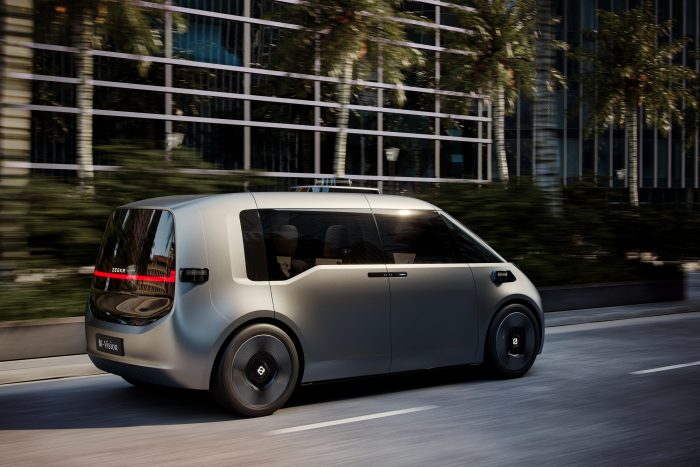
It’s believed that Geely boss, Li Shufu, never one to miss an opportunity to build another car on the SEA platform, requested that Zeekr make an M-Vision for the general public, and thus the MIX was born.
Much like the M-Vision, the MIX features separated springs and dampers to reduce cabin intrusion from the suspension, as well as steer-by-wire technology that enables the front wheels to turn up to 50-degrees, resulting in a turning radius of just 4.95-metres.
Along the sides, it features electric swing doors (and a conventional electric door on the driver’s seat) that open towards the front and back to create a pillarless entry almost a metre-and-a-half wide into a Tardis-like cabin.
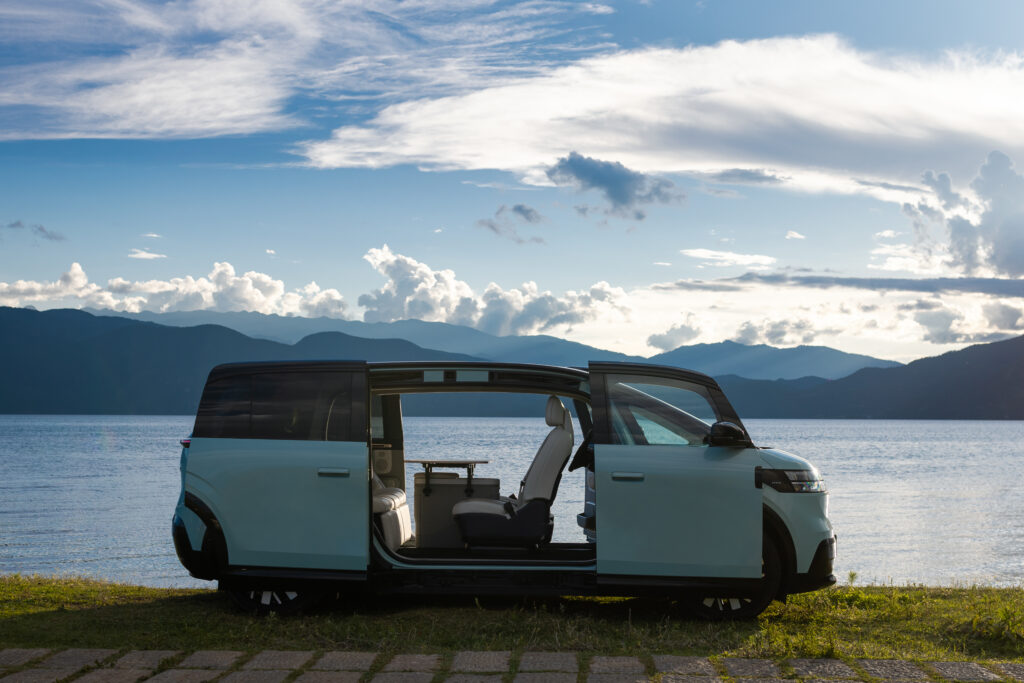
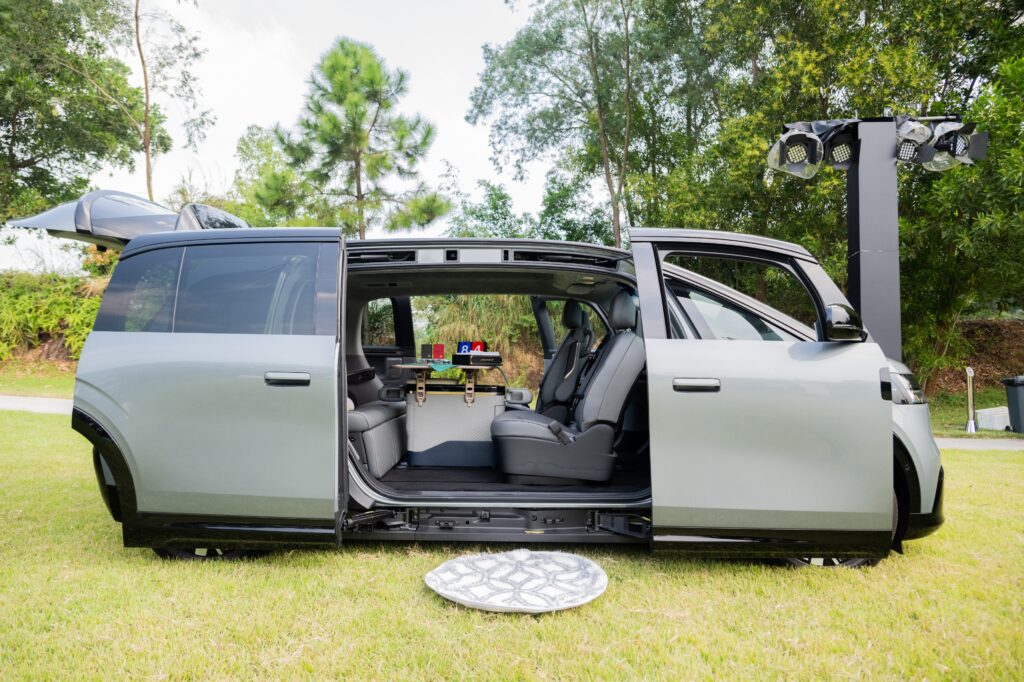
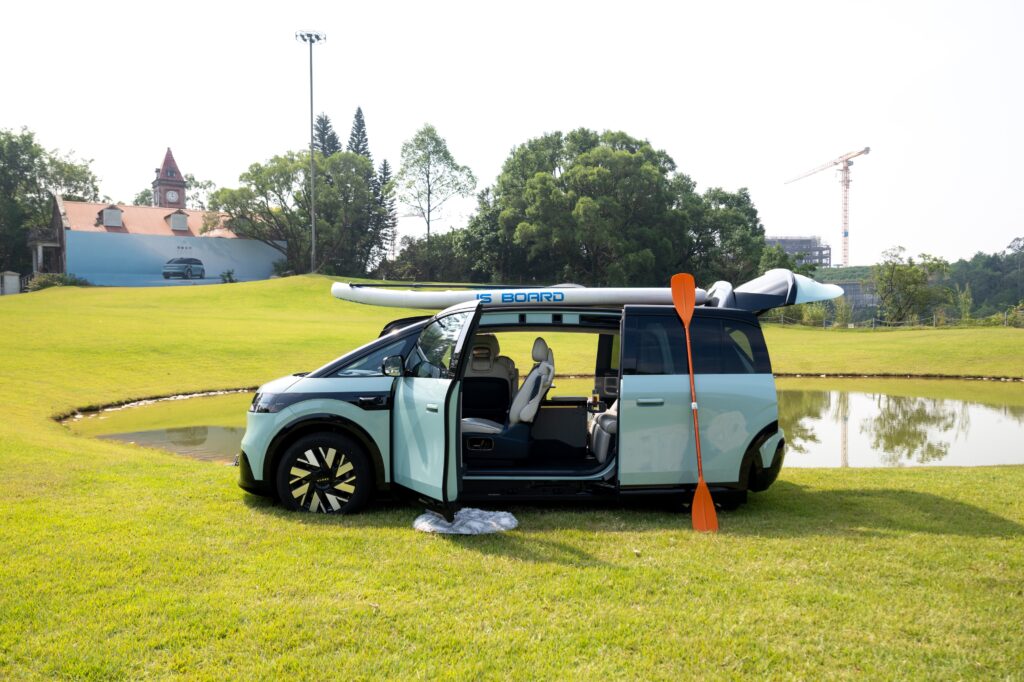
Admittedly, at 4.69-metres long, it’s a good 50cm longer than the original Scenic but, with a wheelbase a smidge over 3-metres, it truly maximises that extra length, boasting a cabin utilisation rate of 93%, but more on that later.
Elsewhere, the MIX adopts the new Zeekr face complete with the Stargate LED panel across the front, a stubby front nose ahead of twin A-pillars forming an appealing monobox profile, and at the back a simply lightbar, large high-level spoiler complete with window wiper, and a clamshell bootlid design.
Overhangs both front and rear are almost non-existent, regardless of whether you take the standard 19-inch or optional 20-inch wheels which come in a variety of styles.
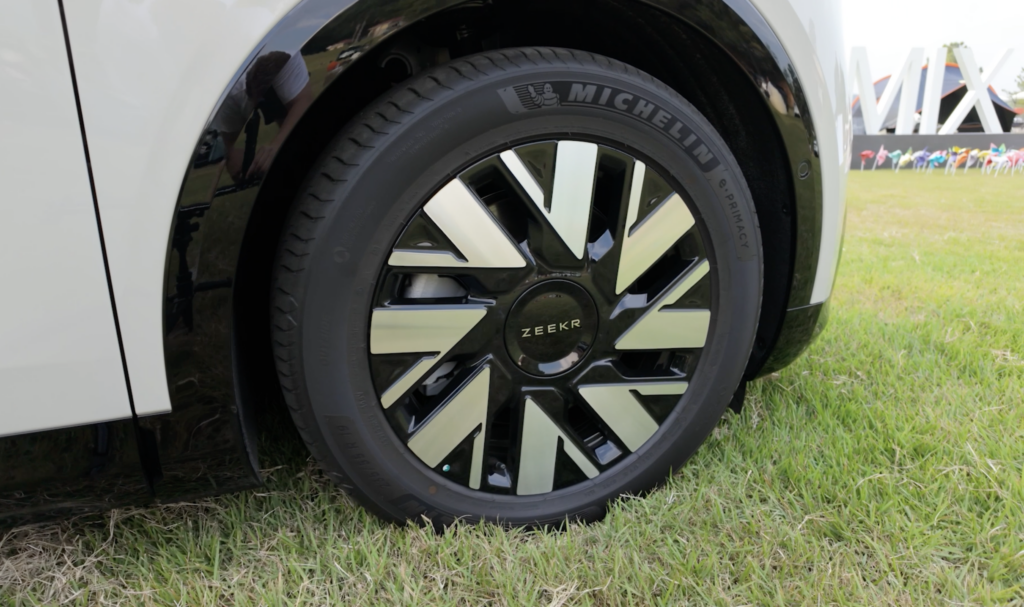
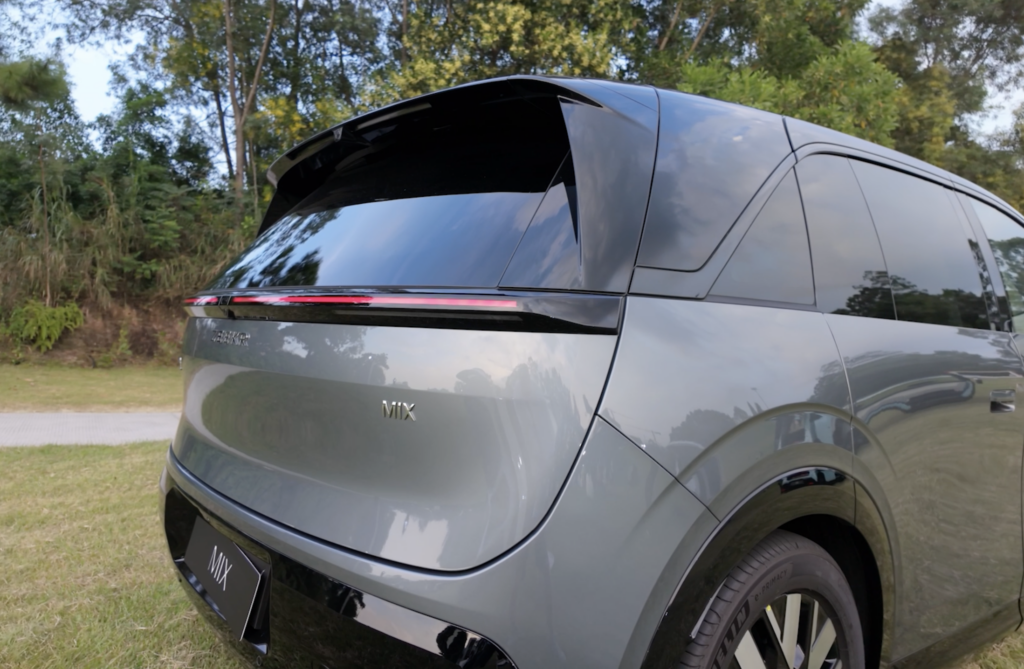
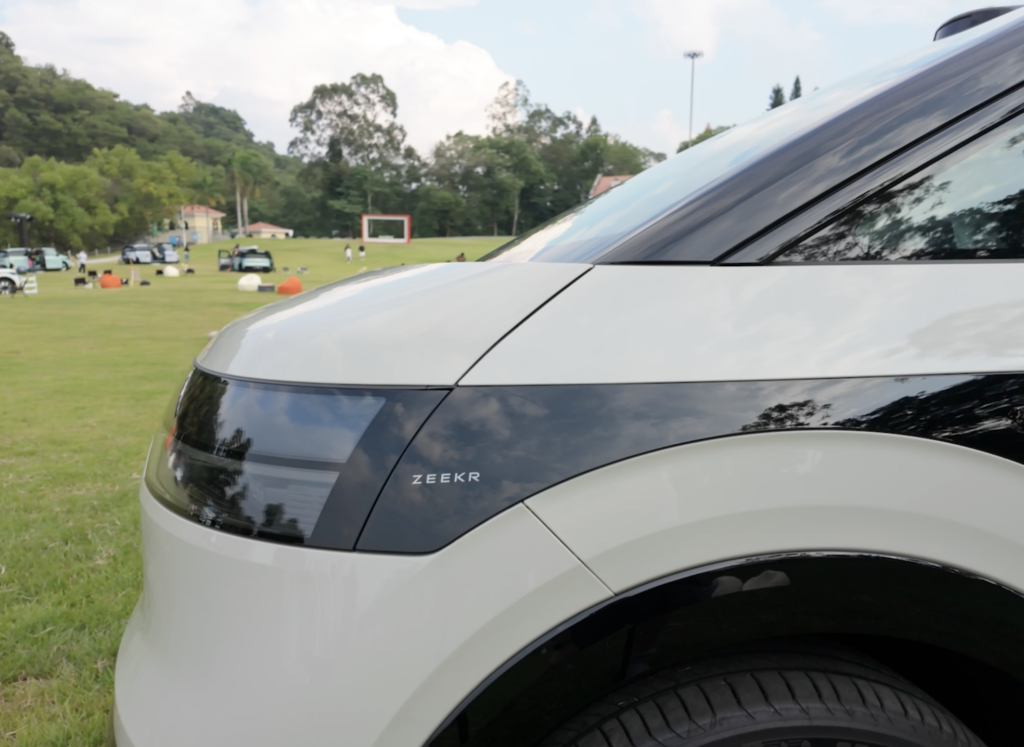
What‘s the Zeekr MIX like inside?
The word ‘spacious’ is bandied about all over the place these days but it doesn’t even come close to describing what greets you in the MIX’s cabin.
With the rear seats all the way back and the front seats in their normal position, the back seats offer more leg and headroom than a Mercedes-Benz S-Class, as well as electronic leg rests, backrest angle adjustment, armrests, and heating, ventilation, and massage functions as well. There’s even an additional footrest that can be electronically folded down on the back of the front passenger seat.
In the front, a curved dash opens up more space for the front passenger seat which can be rotated 90-degrees to face out the side of the car when parked up, 180-degrees to face backwards, or even 270-degrees to face inwards, with a full 850mm of travel forwards and backwards to suit the various ‘scenes’ that Zeekr has prepared in the system. The driver’s seat can also be rotated in such a way but travel is more limited due to the steering wheel.
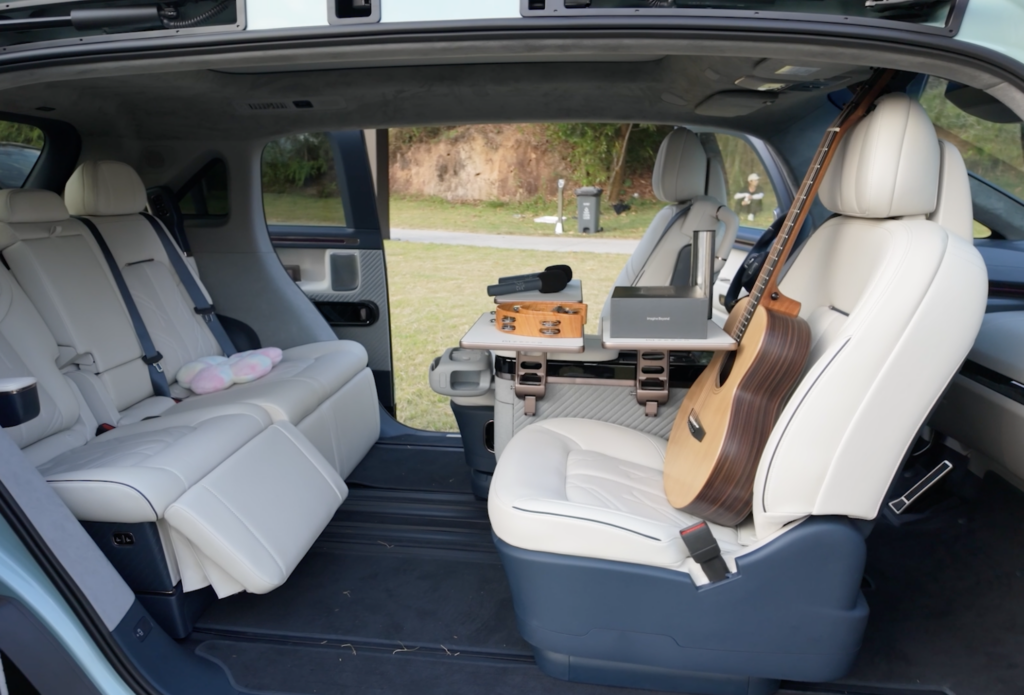
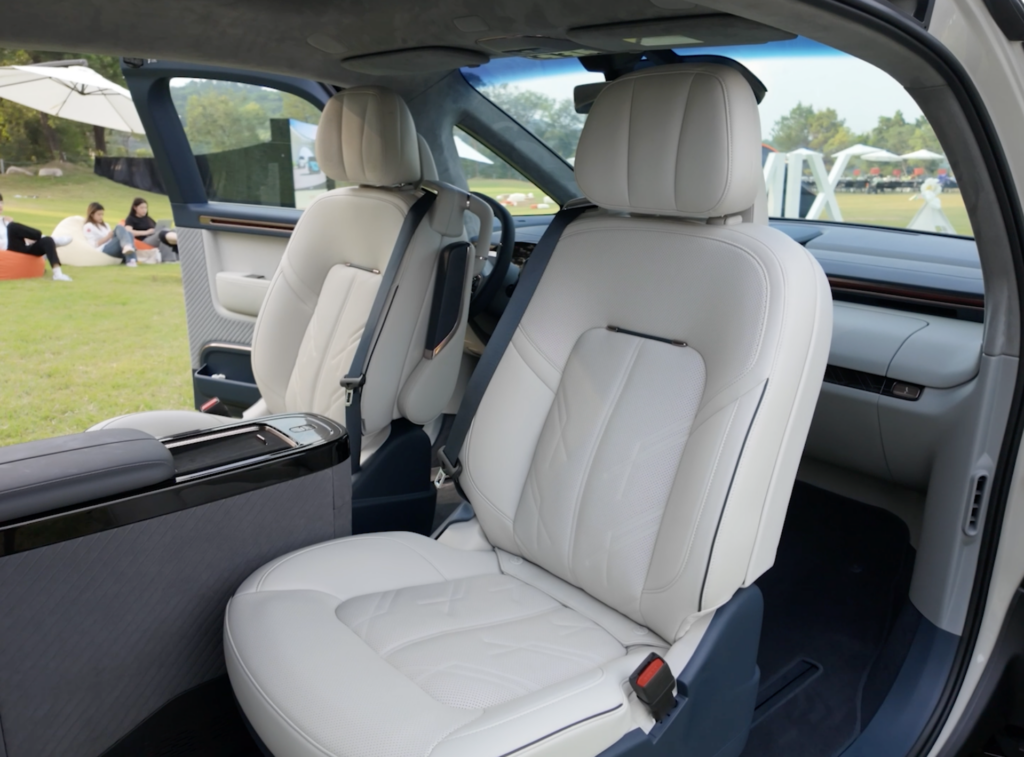
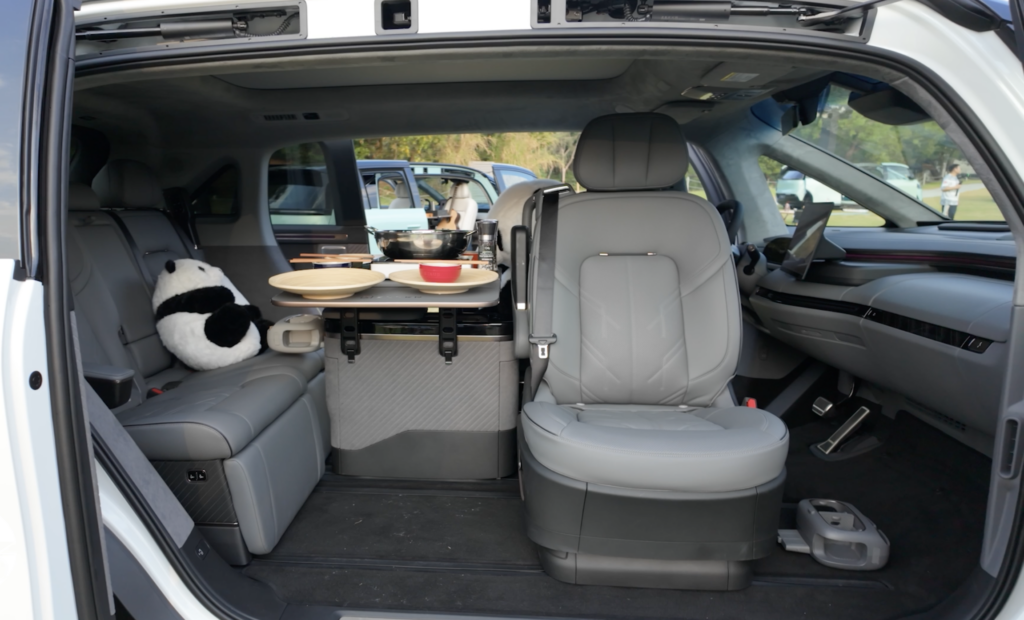
Between them, a removable, multi-functional ‘floating island’ can electronically slide up to 790mm forwards and backwards, meaning it can be used in both the front and the back of the car for the various purposes it offers.
For a start, it comes in two options. One option features standard drawers on both ends, the front a little smaller than the back, as well as slots in the side into which large or small aftermarket tables can be inserted, enabling customers to dine picnic-style with their guests in the rear.
The alternative island sacrifices the table slots in favour of heating and cooling functionality, from 0-6-degrees and 35-50-degrees, with 10.8-litres of space inside.
Both units also features a 50-watt vented wireless charger on top, a cubby hole with USB A and twin USB C sockets inside, as well as slots at either end that can hold an aftermarket twin cupholder with built-in hooks for 2kg bags and a slot for holding a phone. There are even two additional slots on the dashboard for “items we haven’t invented yet”, which is a neat bit of future-proofing.
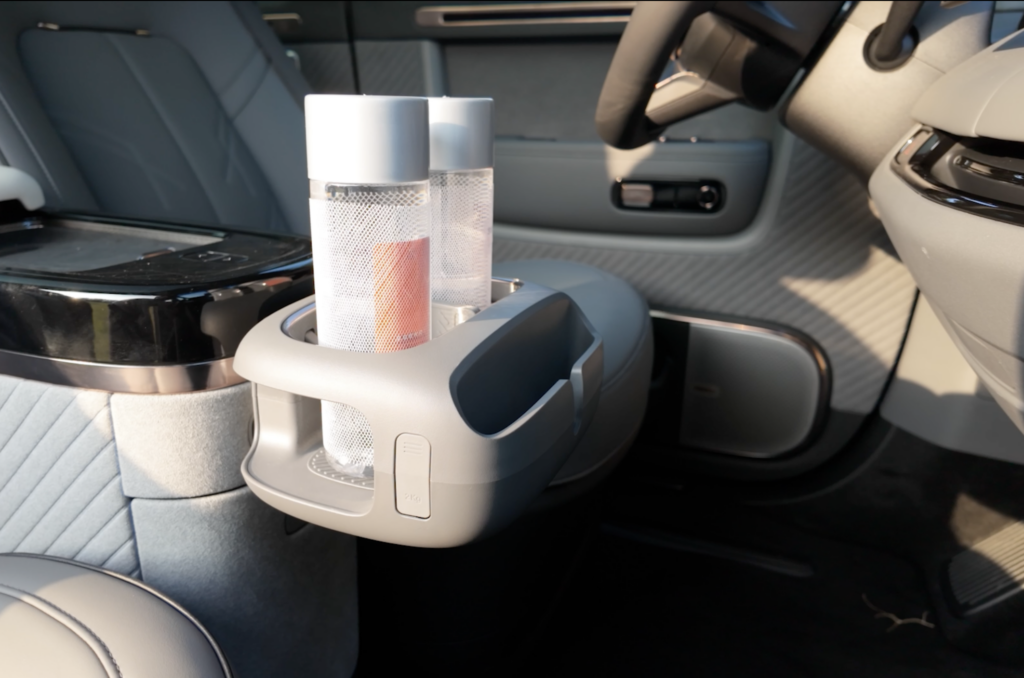
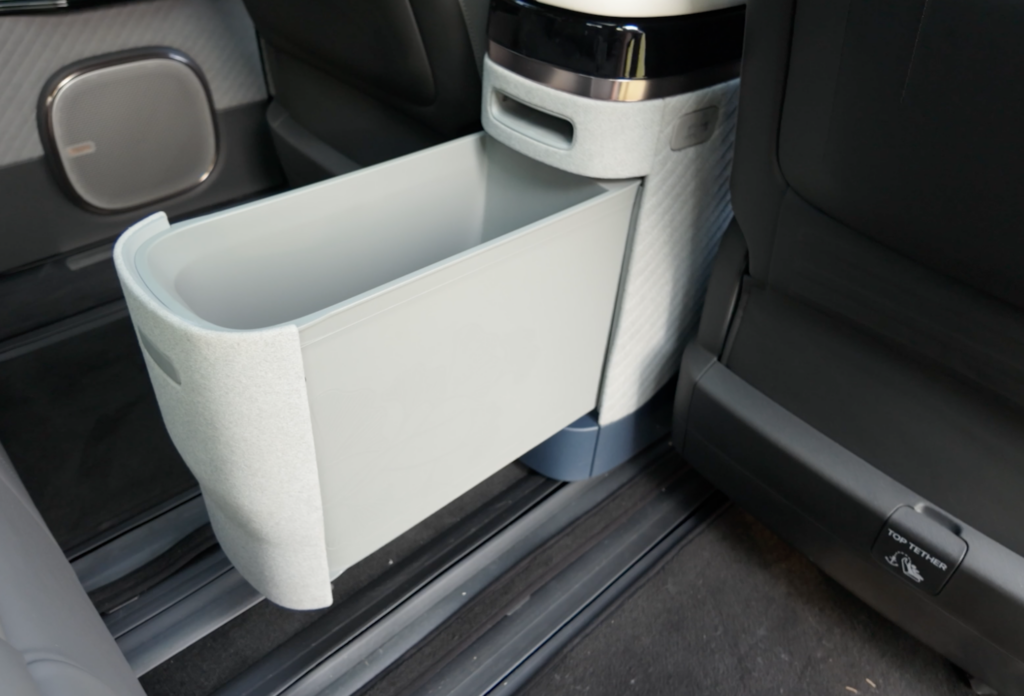
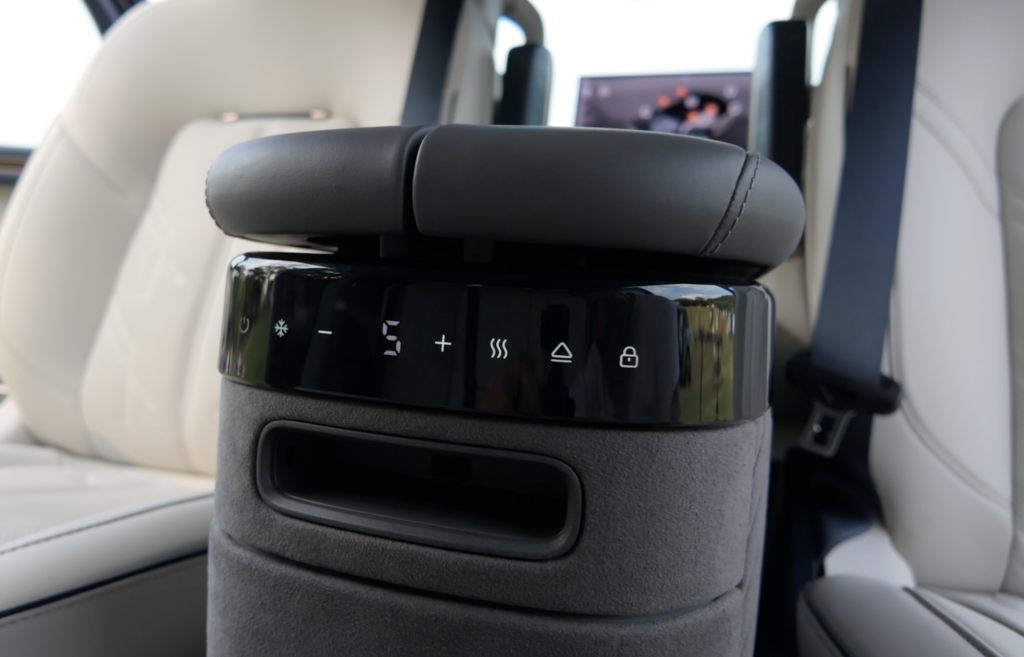
The thoughtful details don’t end there. In three of the doors, beneath the attractive bronze ambient lighting strip, sit ambient lighting lamps. These art deco style units can be pulled out of the door and used as portable camping lights, and replaced back into the doors for charging.
On the driver’s door, there’s a pair of buttons for quick access to either making the cabin ‘normal’ or for swivelling the front seats to face backwards. Not that any of this little dance can be described as quick. It takes an age for the seats and island to move into their respective positions for rotation and you can’t sit on the seats while it does it, but the end result is a cabin that’s incredibly practical and customisable to a myriad of different settings.
You can even slide the front passenger seat backwards and the driver’s side rear seat forwards to unlock ‘baby feeding’ mode whereby the front seat passenger can keep a close eye on baby, or just push the front seats right out the way to open a wide, flat playing area between the front and back seats for kids entertainment or even height-limited yoga (135cm if you must know) if you so desire.
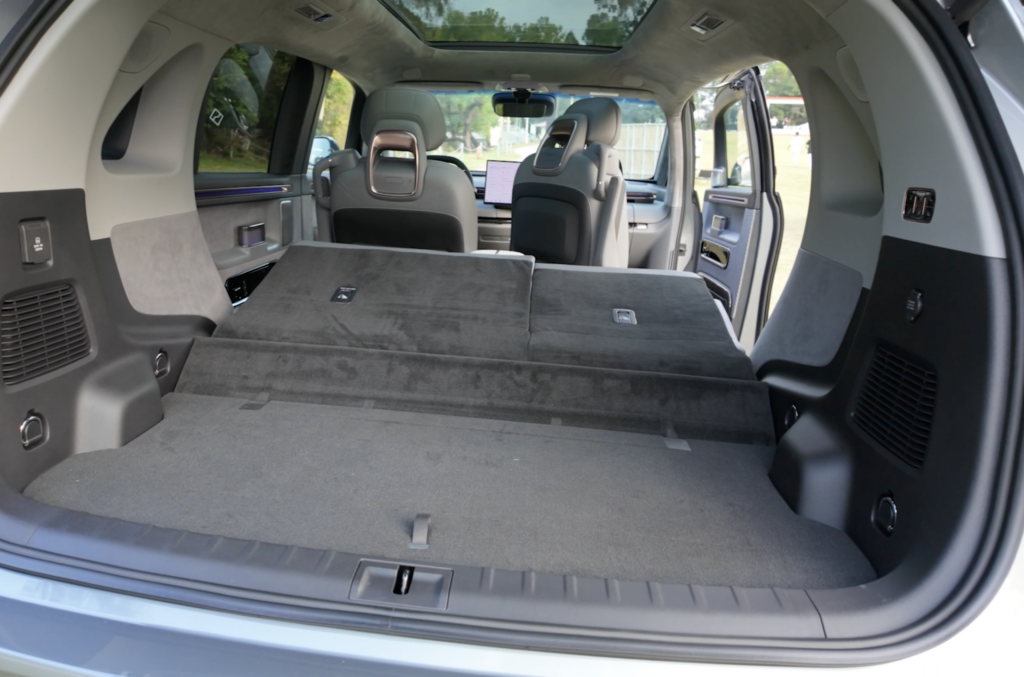
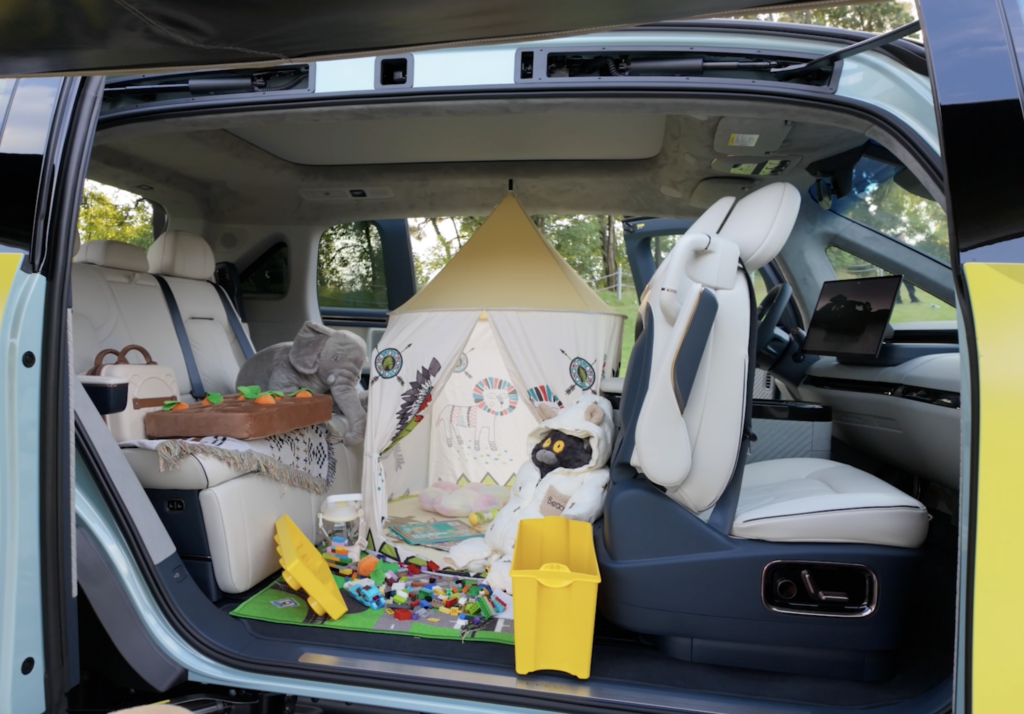
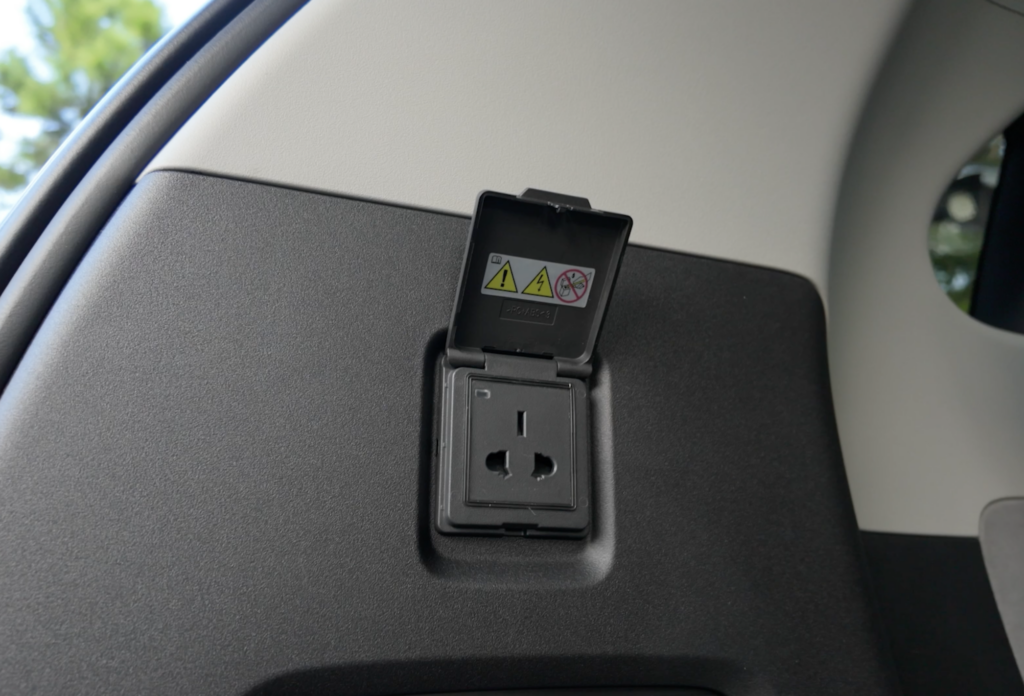
In the boot, there’s up to 568-litres of space behind the second row seats, and more than 2,000 with the seats folded down, which is made possible via switches in the boot area. They don’t fold totally flat mind, there’s a little step up behind them, but it’s still far more practical than much out there. There’s even a 220-volt socket in the boot for 6.6kW V2L.
Material choices are generally lovely with a lot of microfiber and seude-like materials as well as synthetic leathers on the dash, with harder plastics generally kept out of the way. The seats also sport what Zeekr are calling Monaco Nappa leather, which is apparently softer and more environmentally friendly, though we’re not sure how.
Both front seats get the same heating, ventilation, and massage functions as the outer rear seats, as well as 12-way adjustability. The only thing they’re really missing is a little base cushion extension but you’ll find they’re plenty comfortable and embracing for the purpose. Finding a suitable driving position isn’t too difficult, though annoyingly you have to fish around in the menu to adjust the steering wheel and mirrors.
As well as a huge amount of glasshouse, more than 7m2 in total, there’s a 2.13m2 panoramic roof which, much to our great relief, comes with an electric sunblind as well.
With the slow dance of the seats and the inability to remove them, it’s not quite the same practicality that the Scenic offered, nor is it anything like as compact, but it’s a beautifully thought out interior, endlessly adjustable for a tonne of different scenarios, and really rather luxurious to boot.
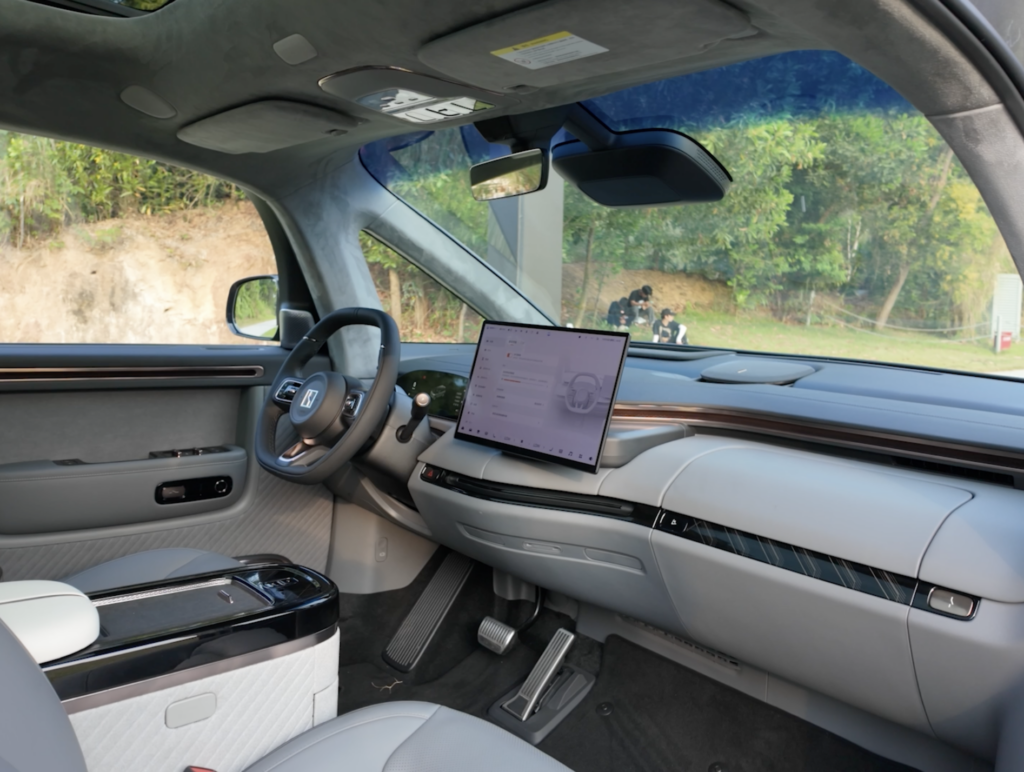
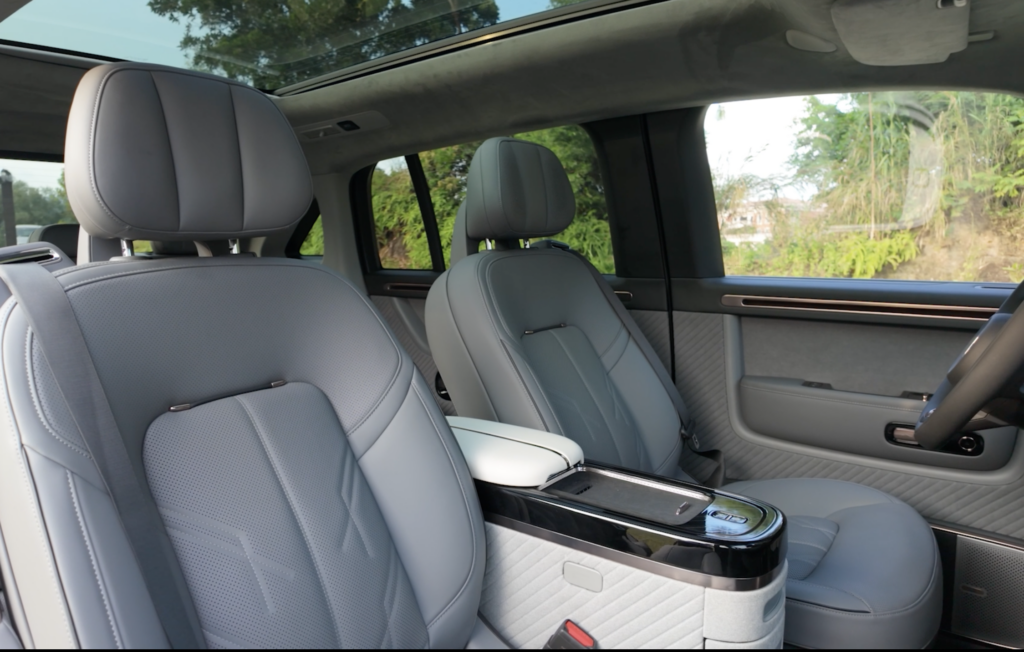
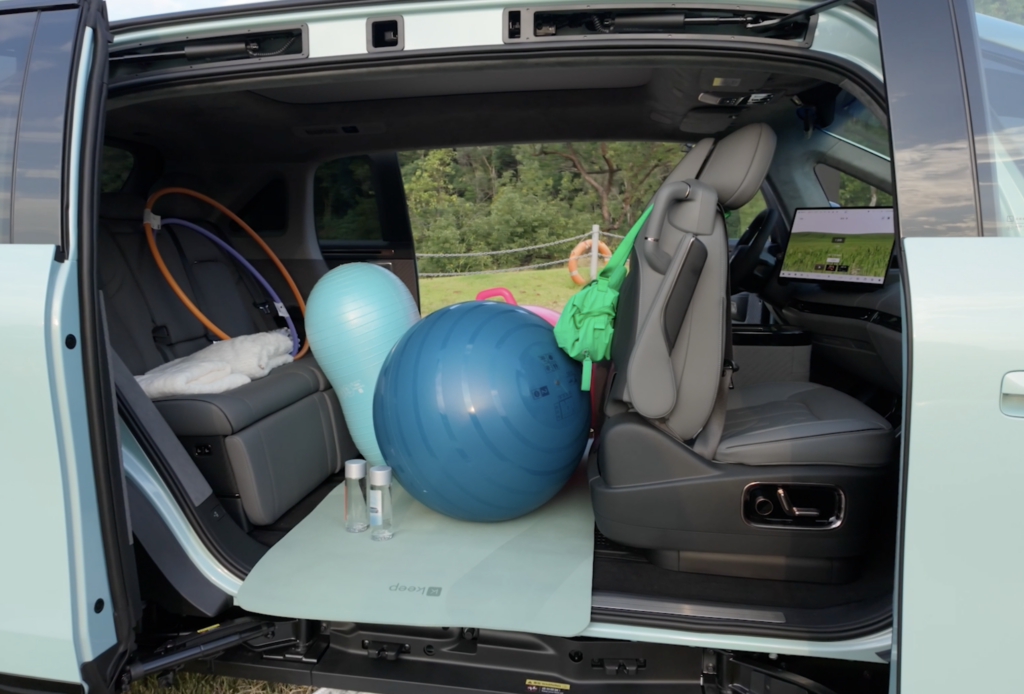
What about entertainment and infotainment?
Entertainment, at least on early models, comes via the 15.05-inch, 2.5K central screen which runs Zeekr’s latest operating system and the latest Qualcomm Snapdragon 8295P chip for super slick operation.
We like Zeekr’s set-up with its twin toolbars, one on the left for customisable fast-access functions, and one on the bottom for the usual ventilation and seat controls. We’d like the steering adjustment to be in the drawdown menu at the top but if you’re not constantly sharing cars with others it might not be such a big deal.
It does of course come with EVA, Zeekr’s artificial intelligence bot who can answer all your various questions and be your tour guide, as well as applications for films, TV, social media, and even parcel delivery and ordering coffee, and it can be turned 47-degrees to point more towards the driver or front passenger, depending on who wins the game of rock, paper, scissors.
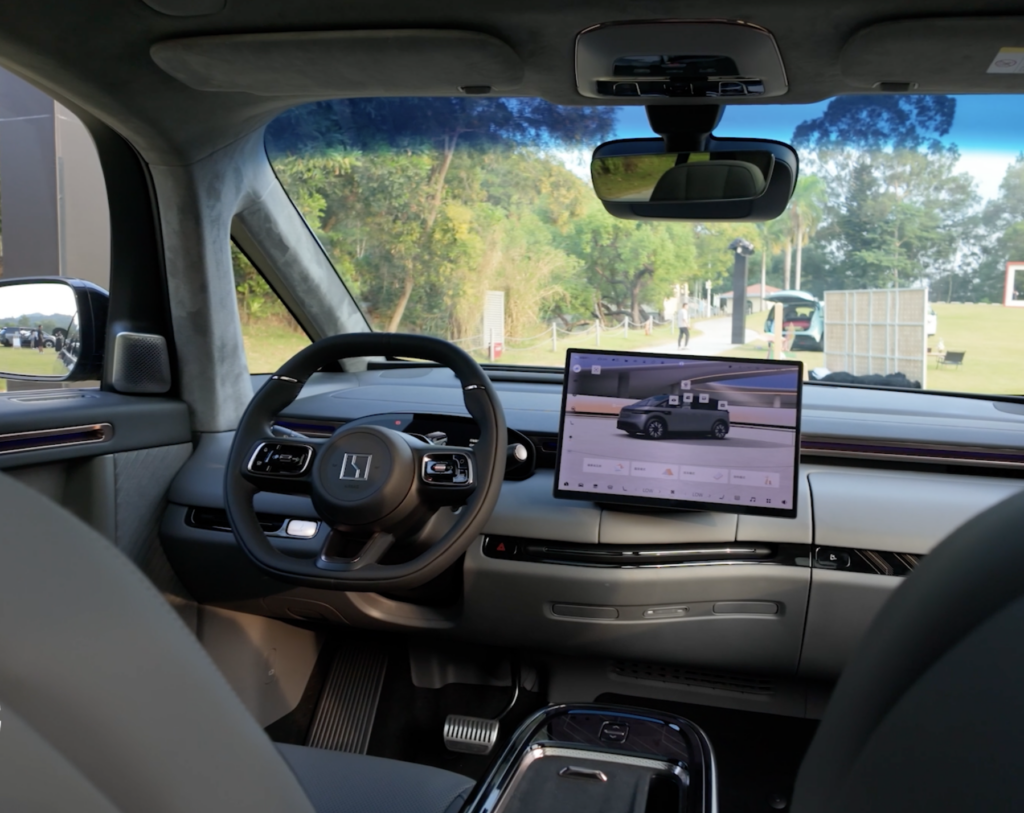
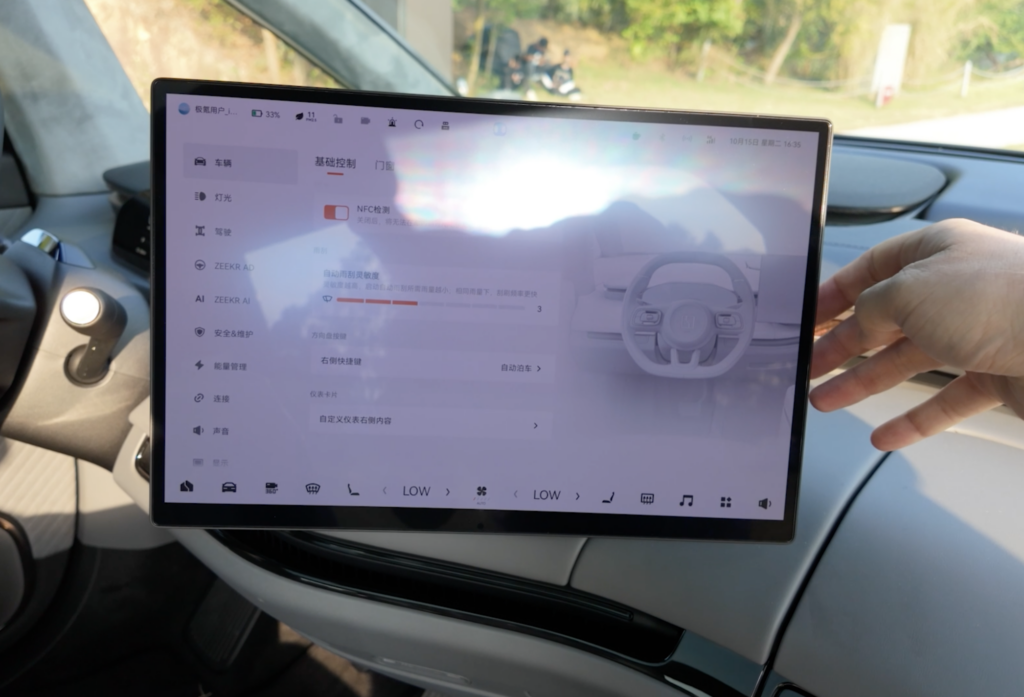
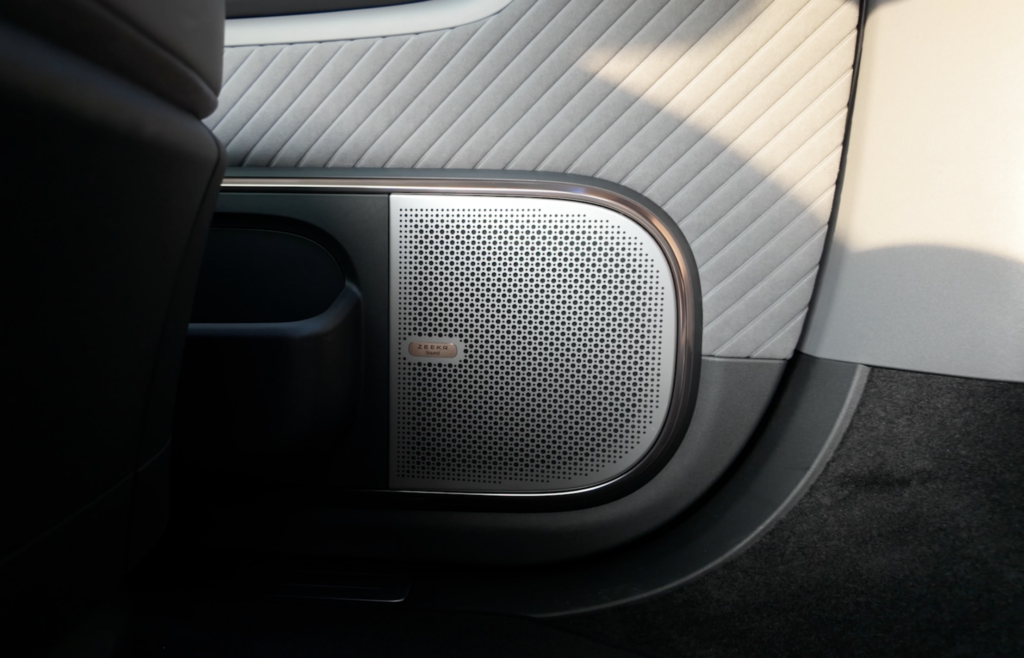
It’s mated to a 21-speaker, Zeekr-developed sound system that offers 2160-watts of output and Dolby Atmos support, and there’s an app in the system to find films and TV shows specifically developed in Dolby Atmos. As you’d expect, it’s 7.1.4 surround sound and offers 16 channels.
Also in the front, there’s a 29-inch augmented reality head-up display for the driver, which feels an awful long way away given how far away the windscreen is from the driver, as well as a 13-inch instrument screen.
While those in the back have to do without screens, it’s expected that won’t be forever, since the front seat backs feature expansion ports and USB sockets suggesting aftermarket screens will be an option at some point, which just about means the entire kit list imaginable has been selected.
Ah, there’s also an optional fragrance system as well, and gesture recognition if you’re into that kind of thing.
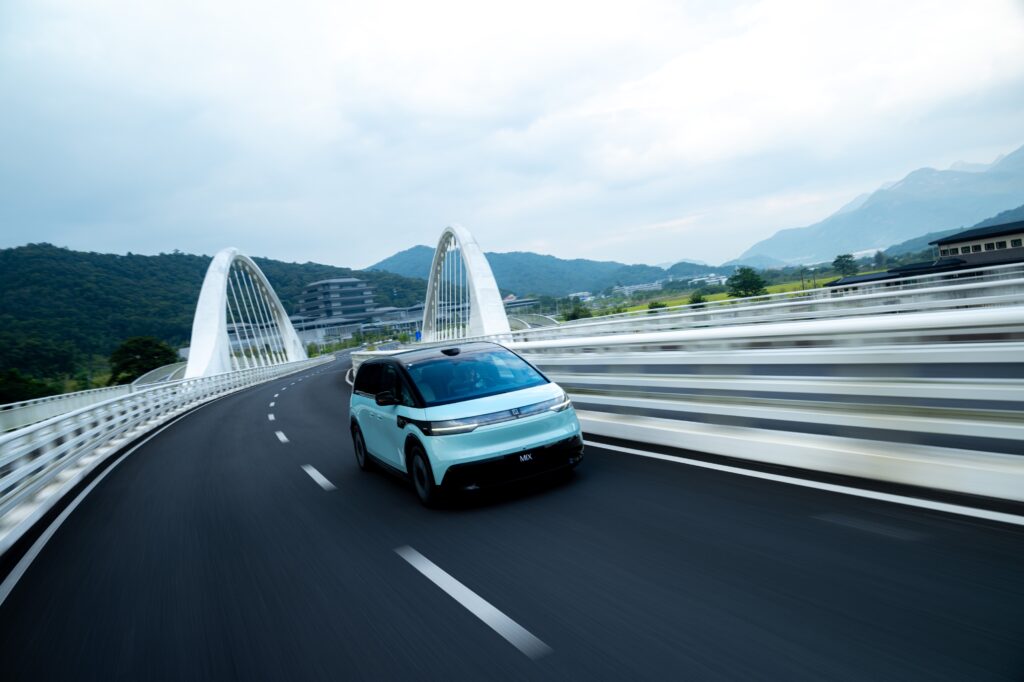
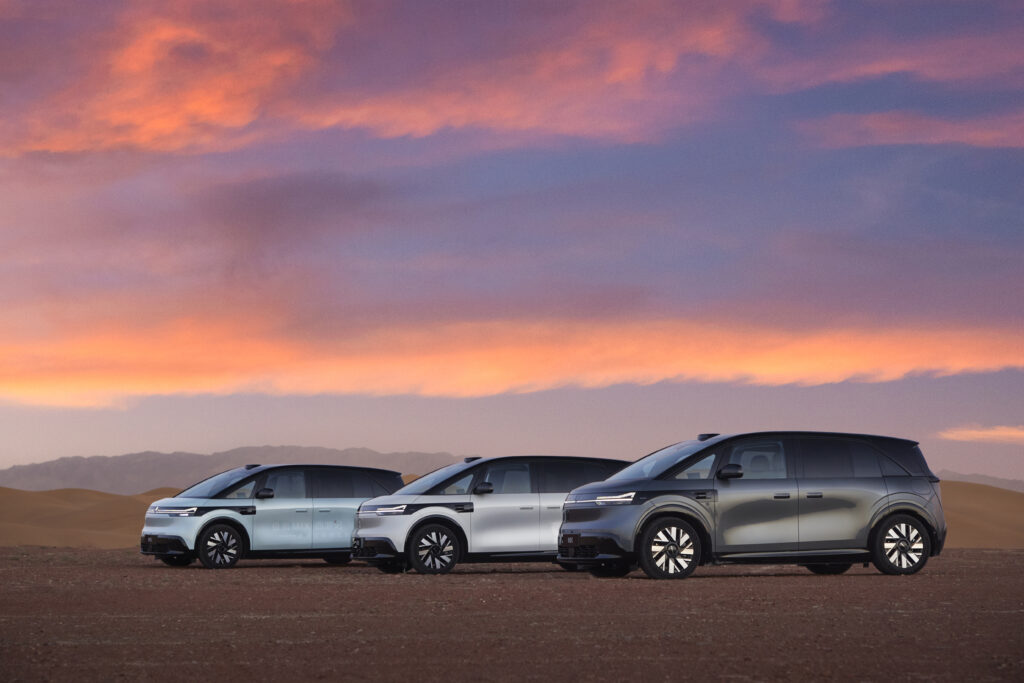
What’s the Zeekr MIX like to drive?
You can often get a feel for a how a car will drive within the first 200-metres of doing so and such was the case with the MIX.
I climbed into mine with sport steering already selected and it was immediately smile-inducing from the get go. Let’s not kid ourselves, this isn’t some kind of BMW or Xiaomi SU7, but the relief of feeling something when turning the wheel rather than merely rotating a disconnected circle was palpable.
Given the steer-by-wire set-up and fancy rear suspension arrangement, I’d half expected the MIX to excel at being a family car but collapse as a driving tool, but that fear couldn’t have been further from the truth. Not only does it ride really well on poor surfaces, much like its 007 sibling without air suspension or continuous damping control, but it’s epically manoeuvrable too, capable of spinning on a dime without shredding a pair of tyres in the process (I’m looking at you, Denza Z9 GT).
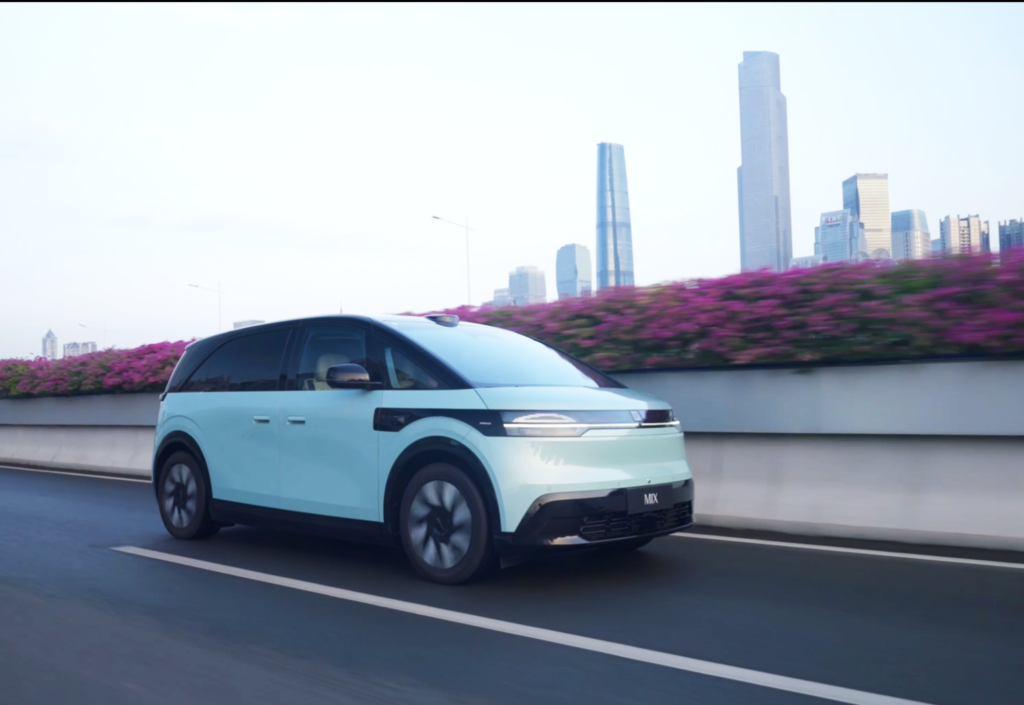
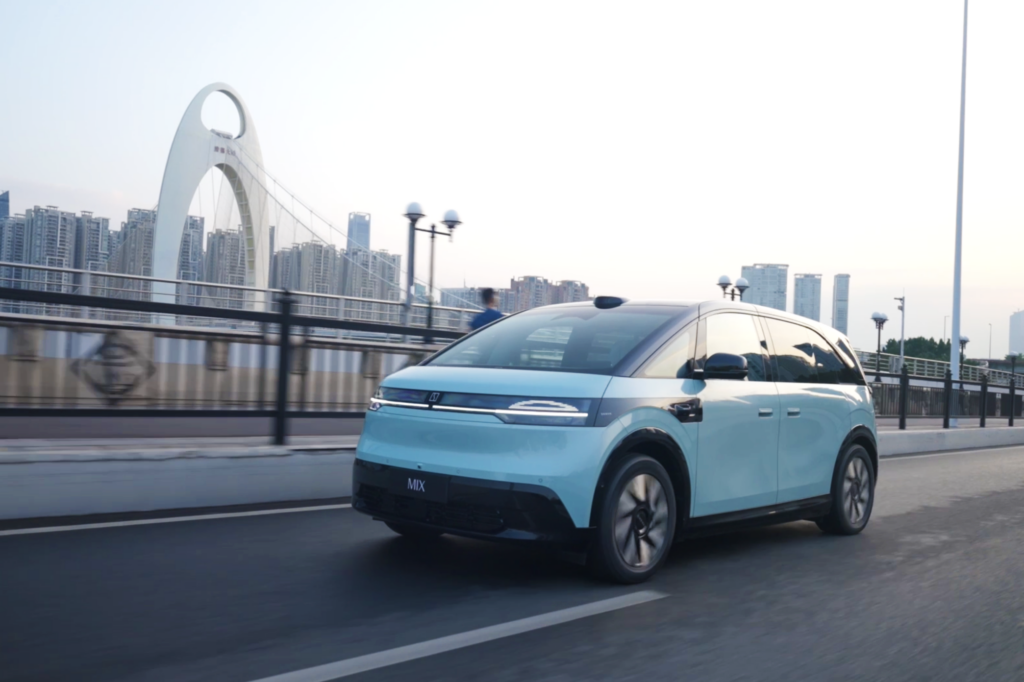
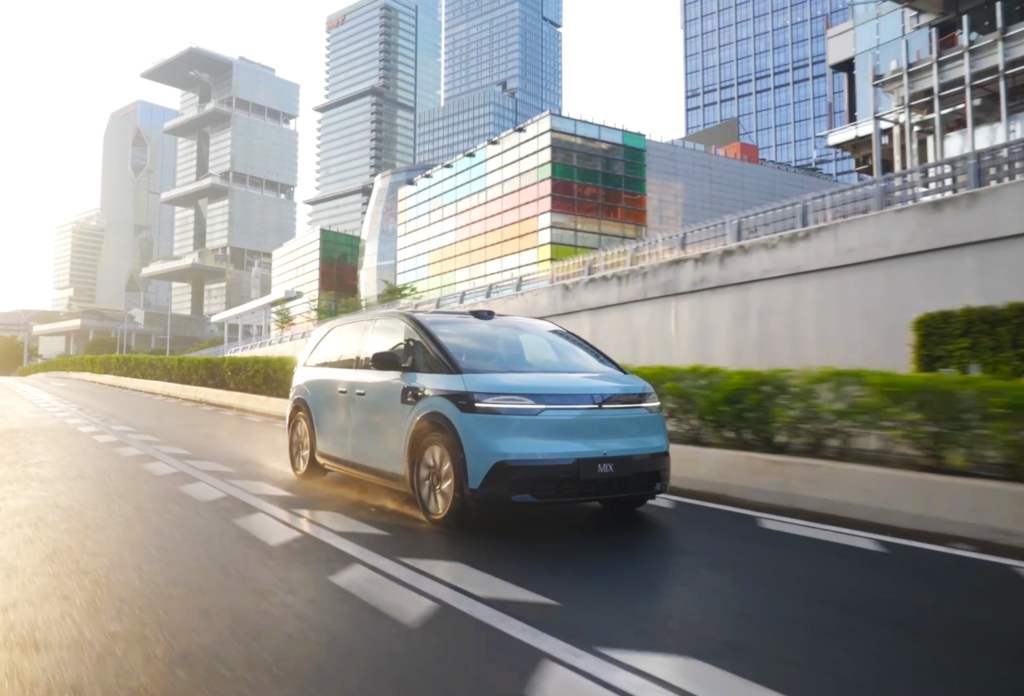
With 3.5 turns lock-to-lock, it does involve some effort on your part, but for the most part the first turn either way will do the business with the extra three-quarters giving that super tight turning circle.
Overall, it’s a zippy thing. It might only get a single motor on the rear axle, but that single motor is the same 310kW unit from the back of a Zeekr 001, meaning you get 415hp and 440Nm of torque. That’s a good five times more power than some of the early Scenic models. It’s enough for a pleasantly brisk 0-100kph (0-62mph) sprint of 6.8 seconds.
Placing the nose of the MIX is a doddle too, given the bonnet only extends about 30cm forward of the base of the windscreen, so you always know where you are, and with the usual 360-degree equipment and automatic parking available too, you’re covered either way.
The MIX’s 800-volt chassis means it’s capable of using two of the finest batteries on the market today. The entry-level, if you can call it that, is the same Golden Brick battery you’ll find in the 007 and 7X, but a little larger at 76.5kWh. As the world’s fastest-charging car battery on sale offering more than 500kW of peak charging speed, it’ll charge from 10-80% in just 10.5 minutes. This Zeekr-developed LFP unit offers a claimed CLTC range of 550km.
Opt for the larger battery, a 102kWh NMC unit from CATL, and you won’t be much slower charging from 10-80% at 11.5 minutes, or 500km in 15 minutes if you prefer, but you’ll get the benefit of additional range topping out at 702km on CLTC.
Our ride wasn’t exactly representative of daily driving and our figures were skewed by the bulk of the mileage being completed by somebody else, but our numbers were hovering around 20kWh per 100km on what we think was the NMC battery. We’d expect it to be a bit better than that in normal driving.
But if you don’t want to drive the MIX, you don’t have to. All versions come with a lidar unit mounted atop the windscreen giving access to NZP, Zeekr’s autonomous driving system, which is capable of travelling door-to-door, as in parking space to parking space, without any human interaction. We haven’t yet had the privilege of testing it and didn’t get time to really try it on the MIX, but it claims to be able to do urban autonomous driving in many cities across China and is powered by twin NVIDIA Orin-X chips for 508TOPS of processing power. We’ll let you know when we review it.

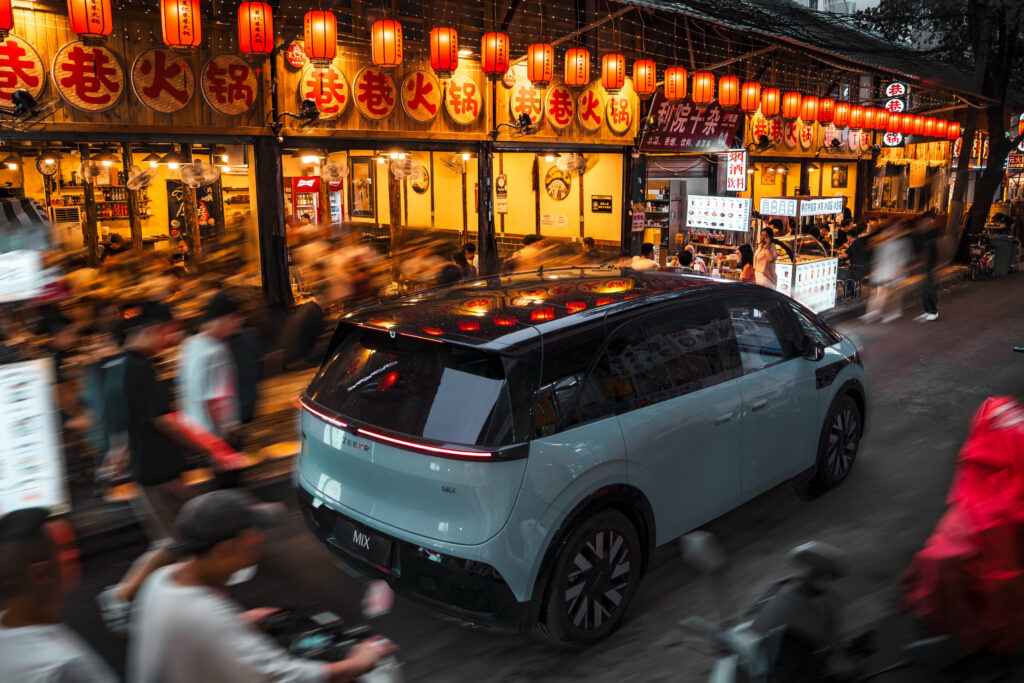
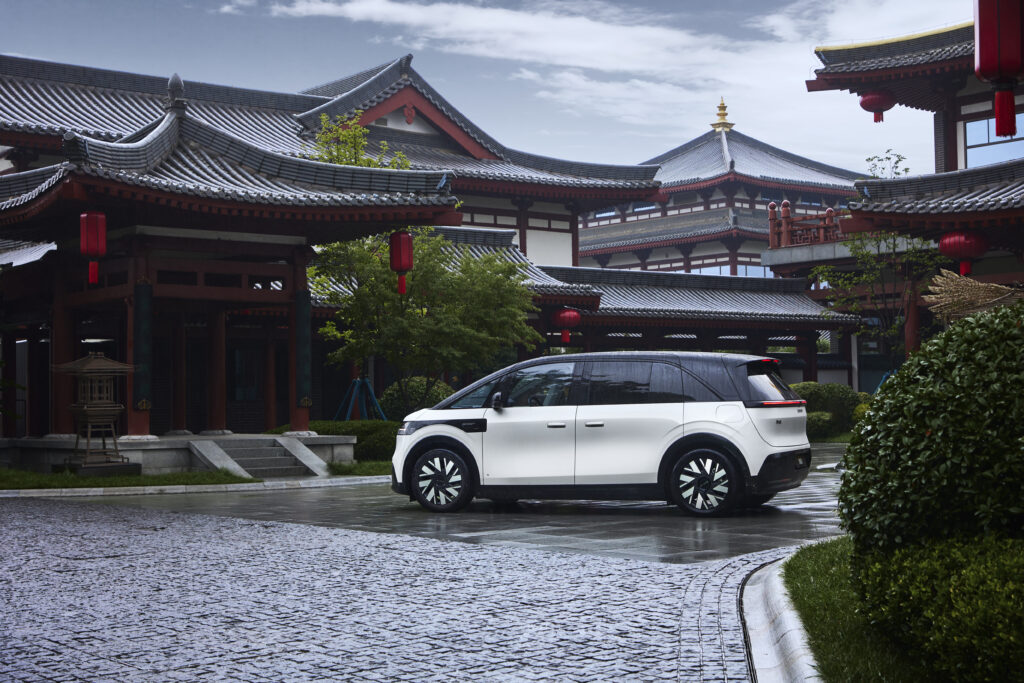
How much does the Zeekr MIX cost?
The MIX is offered from launch in two variants, the base version with the 76.5kWh LFP battery from 279,900RMB ($39,250) and the flagship version with the 102kWh NMC battery costing 299,900RMB ($42,000).
Conclusion
So after all that hype, admittedly of my own doing, is the Zeekr MIX all it was made out to be or a bit of a letdown?
Comprehensively, and much to my own personal pleasure, it’s the former. They say don’t meet your heroes and, in all honesty, I’d put quite the burden on the MIX delivering what I hoped it would. I’ve been on the lookout for the right car for my young family for ages now and choosing one from China’s endlessly brilliant buffet of cars has been a nightmare, but the MIX felt like the second coming of an old legend and I’d hoped it wouldn’t drop the ball.
It didn’t.
Car design has become such a tickbox exercise in recent years and the thought that once went into how people will use their car has seemingly disappeared. The MIX rights much of those wrongs, installing so many clever little ideas and functionality into a car that isn’t an unwieldy giant.
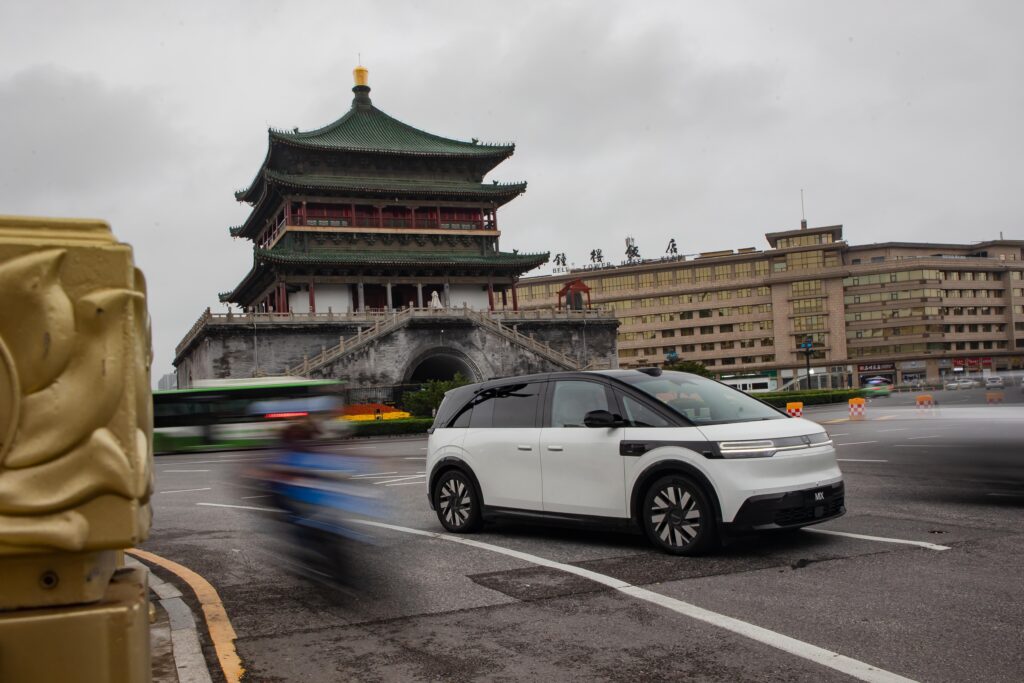
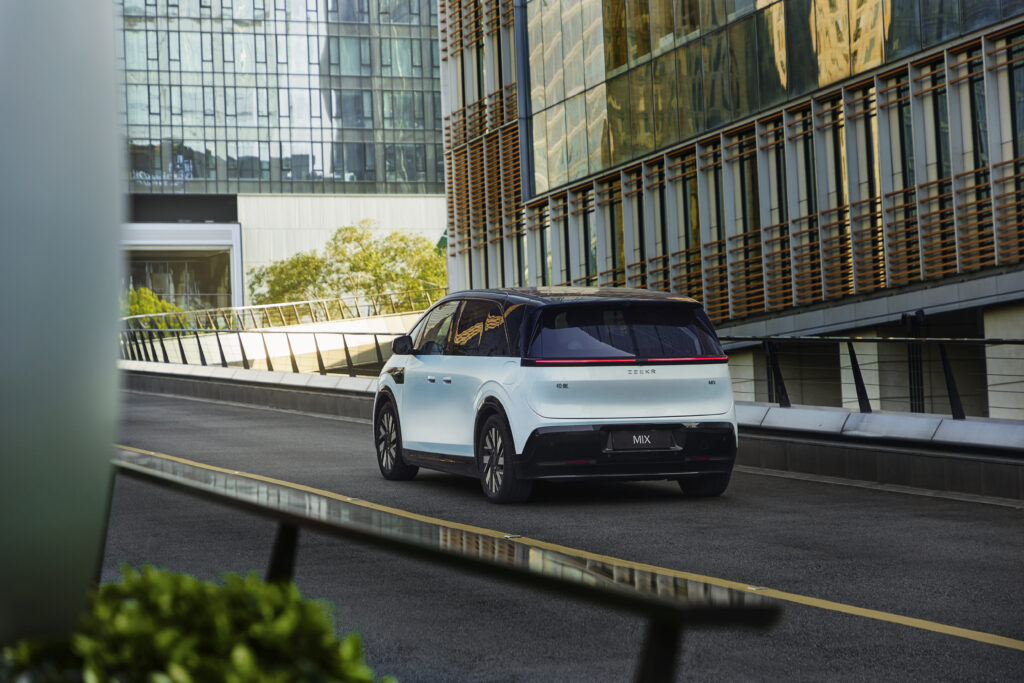
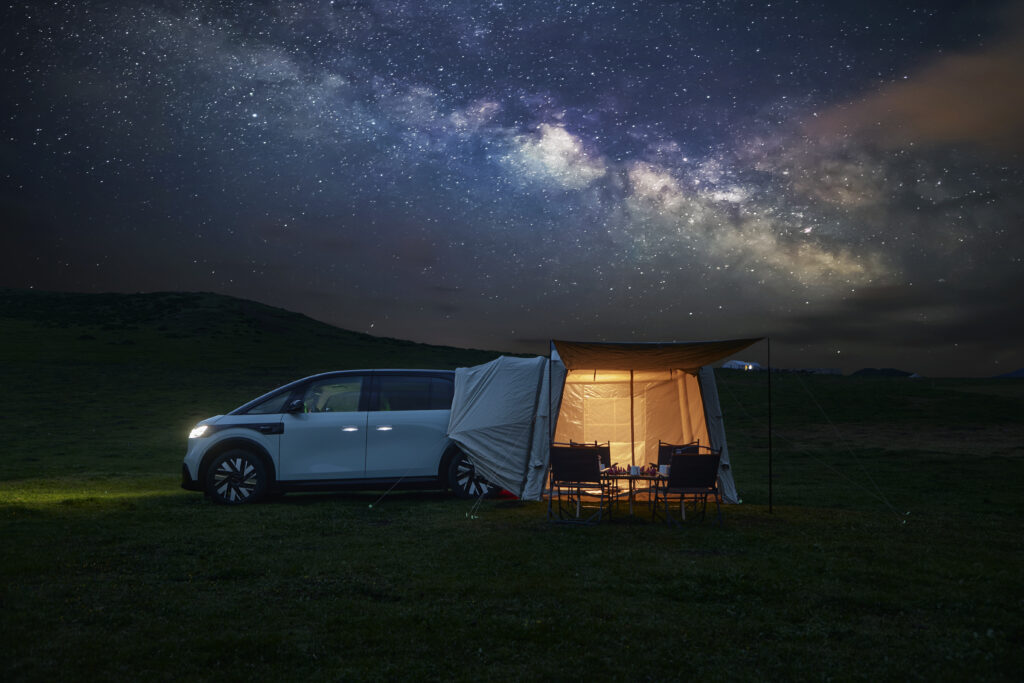
Does it feel like it could be a challenge to maintain build quality to begin with? Yes. Those doors are surely quite heavy and they’re obviously more complex than standard doors. The seats too, rely heavily on electricity and the carpet staying clipped under the rails.
But the MIX feels like a car I can’t do without, like it’s a portal to so many fun times as a family in the future, my own personal Renault Megane Scenic for the 21st century, and for that reason, I will absolutely be putting down a deposit on one when it goes on sale a couple of hours after I finish this article.
It’s convinced me in all the ways it needed to and excelled expectations in others, and I suspect it’ll do the same for others tired of the SUV monotony. Maybe, just maybe, mini-MPVs are back.


